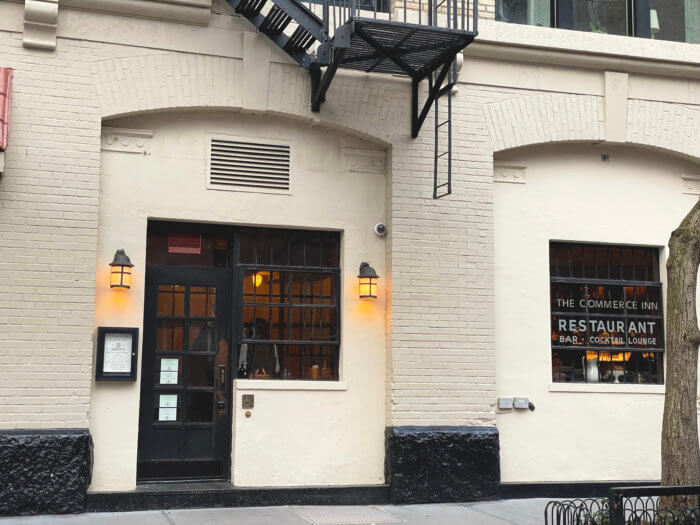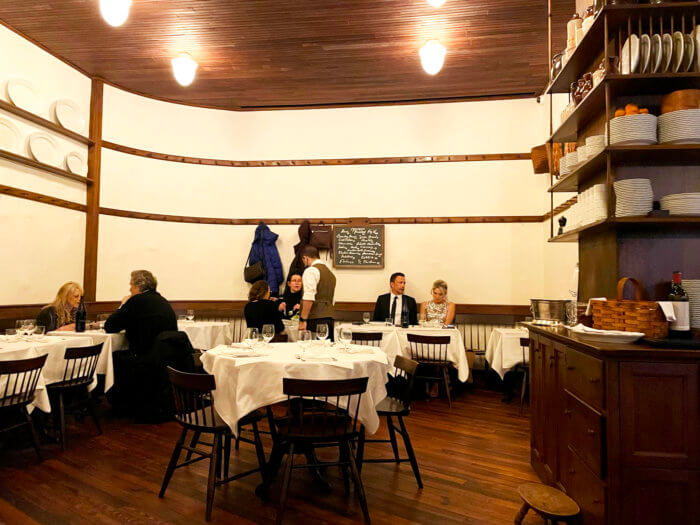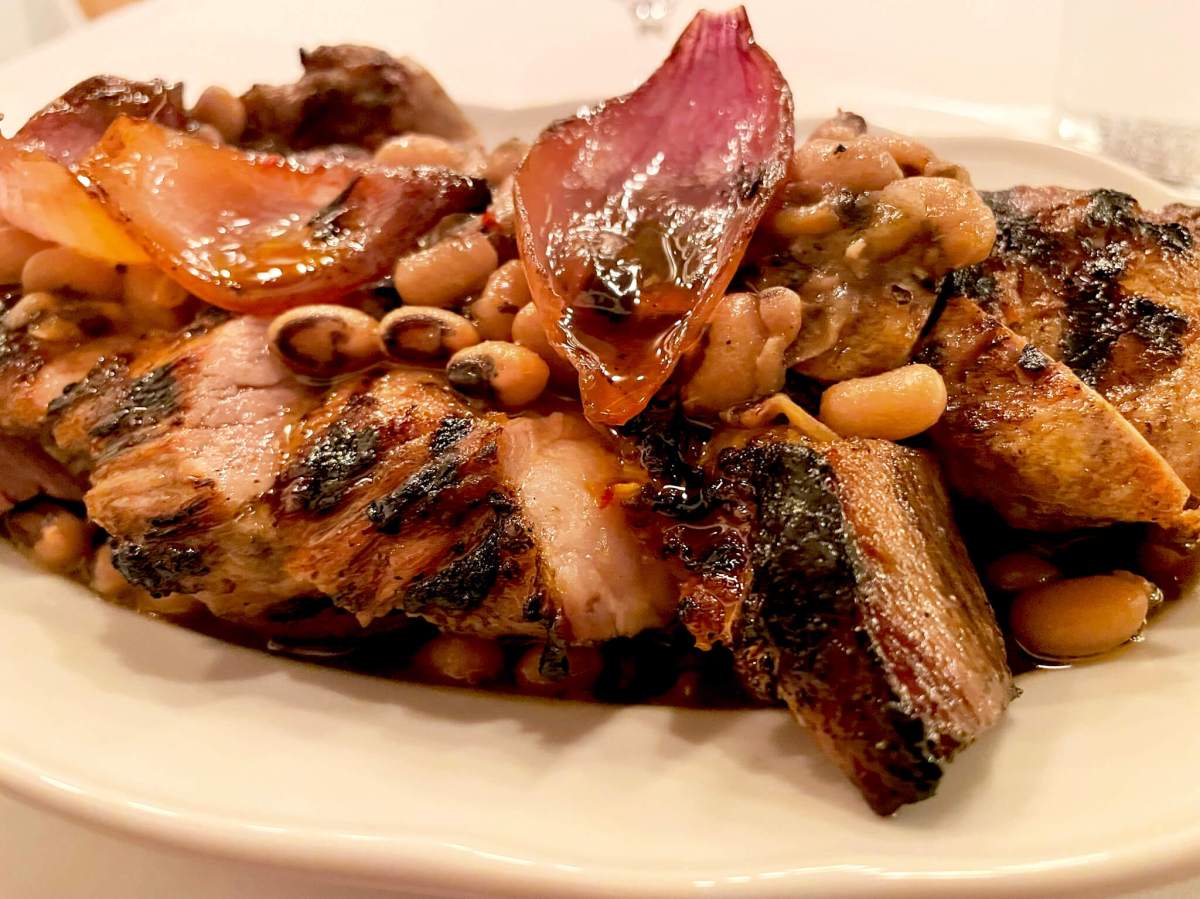The Commerce Inn is a departure from chefs Rita Sodi and Jody Williams’s French and Italian ventures. On the surface, it appears odd. Why would the award-winning restaurateurs — whose popular joint and solo European eateries that pepper the West Village — suddenly cross the Atlantic to American cooking? And how did they become inspired by Shaker cookery?
The Shaker-influenced restaurant is third in the life and business partners’ ventures together over seven years. Each chef has solo restaurants aside from their growing restaurant empire. The couple is known for their Tuscan-inspired Via Carota, their first restaurant together, which opened in 2014. They followed that with the Italian coffee bar, Bar Pisellino, in 2019.
Sodi, 60, has her solo restaurant, I Sodi, which opened in 2008. It is also where the couple met. Williams, 59, owns Buvette, which she opened in 2011. Buvette expanded to locations on three other continents, reported Edible Brooklyn.
At first glance, it doesn’t seem that Italian and French cooking has anything to do with Shaker cooking, or for that matter chefs born and raised in California, Williams, and Tuscany, Sodi. However, the common ingredients through these diverse culinary traditions are fresh food, simplicity, attention to detail, and openness to innovation building upon tradition.
It comes out in the dishes they serve in the chic utilitarian restaurant that brings diners back to America’s revolutionary time, yet it is modern and minimalist in Shaker tradition.
“We’re also thrilled to be using ingredients that aren’t French or Italian, to be exploring a new genre,” Williams told the New York Times. “We’re having a lot of fun.”
Americans and New Yorkers appear to be desiring a simpler time following the early days of the pandemic — and as we learn to live with COVID-19. Sodi and Williams seem to be on target with The Commerce Inn. Their New York faithful followers for nearly 15 years seem to be impressed six months after the restaurant’s doors opened in December 2021.

Obtaining a reservation at The Commerce Inn is somewhat challenging, much like their other eateries. It might be a coveted reservation even more so now that the mostly positive reviews are coming in. In the spring, a 5 p.m. reservation was the only time I could get to dine in the 75-seat restaurant. The tables quickly filled up and remained that way by the time I folded my napkin, too full to order dessert (which apparently, I should have left room for).
The main dining room is plain but elegant in a modernist sense. A pew bench wraps around the room. A thick pillar represents a servers’ workstation and separates the main dining room and the tavern. The only décor in the room are the simple tables and chairs, including a long family-style table; two oak ribbons with knobby hooks to hang hats and coats on line the wall; and a long floating shelf displaying white porcelain plates along the back wall.
The restaurant offers a healthy selection of California and Oregon wines and some local wines to keep with the Shaker ethos. I selected Macari Vineyards’ 2019 Syrah, North Fork of Long Island. Unfortunately, the restaurant was out of the 2019 vintage. It was supplanted with a younger 2020 vintage.
Light in body and smooth, the Syrah paired well with the pork chop on a bed of black-eyed peas with smoked ham. The pork chop was infused with a fantastic herbal rub that created a savory crust on the outside and was juicy inside. The smoked ham gave a mouthwatering savory punch to the black-eyed peas, making them the perfect companion to the chop.
While I skipped right to the headliner, the starters, which are the core of the menu, are not to be passed over. The core menu lists lobster chowder; oysters on the half shell served either raw, pickled, or fried; shaker beans with molasses pork belly; marrow roasted with mushrooms; and half roast chicken fried potatoes.
I started with lobster chowder. Each spoonful of the Manhattan-style chowder was filled with lobster meat, which swam comfortably in the flavor-packed tomato and herb-based broth with vegetables.
The dinner menu changes daily depending on what is available at the market. The pork chop was one of the specials for the evening. The specials are handwritten on chalkboards that hang on some wooden pegs on the wall above diners around the room. If you happen to be seated beneath one of the menus, like I was, the server will explain the specials.

It was a 10-year journey to bring The Commerce Inn to life. Sodi and Williams were inspired by the recipes in the well-worn pages of the Williams family’s Shaker cookbooks and the couple’s fascination with Shaker craftsmanship and design.
Williams’s mother grew up outside of Pennsylvania’s Amish and Shaker country, which is how the family obtained the recipes that came into Sodi and Williams’s deft hands and cookery. The couple consulted Shaker experts to expand their knowledge about the religious group’s philosophy and style.
In 2019, they snapped up the space at 50 Commerce Street in the 1911 building. The space once housed other popular restaurants Fifty, Commerce, Grange Hall, Blue Mill Tavern, and a speakeasy before that, according to the New York Times.
Formerly known as the United Society of Believers in Christ’s Second Appearing, The Shakers arrived in the Americas from England on the eve of the Revolutionary War in 1787. A sect of Quakerism, a Protestant denomination, the Shakers were progressives in their approach to issues of gender, race, and sustainability, innovators and embracers of technology, and savvy businesspeople.
The Shakers got their name from their ecstatic dancing during worship, prized simplicity, utility, and honesty. They paid attention to detail, quality, and technology, from the food they ate to their surroundings, in an effort to get closer to God. That philosophy birthed their aesthetic that became synonymous with American design that has enjoyed an ongoing resurgence in popularity through the centuries.
Sodi and Williams took their time conceiving the restaurant. The pandemic unexpectedly gave them more time. In the end, it turns out that they were just on time when the restaurant opened its doors late last year. Their decade-long dream emerged during a Shaker revival among chefs, fashion, art, and design.



































